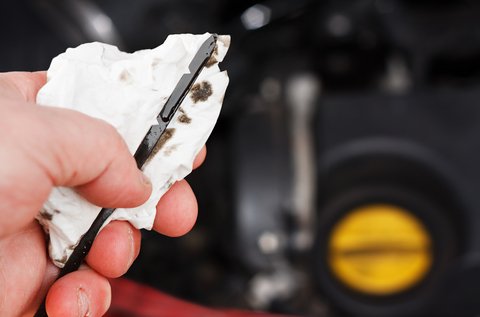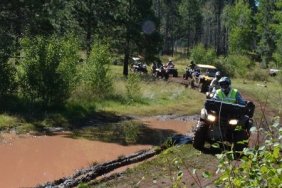
Your off-road vehicle is a big investment, so keeping it in top shape just makes sense. Some simple maintenance can buy you extra years and miles of outdoor fun. Running down a checklist before you ride will help you spot a problem early, before it leads to a major repair issue. Here’s what to look at:
1. Steering
Handlebars, foot pegs, drive shaft, chains
Lubricate the drive chain as needed and check it for slackness. The owner’s manual will tell you how to make a proper chain adjustment. Check the drive shaft for leaks and refer to the manual for correct lubricant levels. Shake the handlebars and footrests to see if tightening is required.
2. Throttle and brakes
Throttle, ignition switch, brakes, shift mechanism
The throttle should move smoothly and snap closed. The foot shifter should be firmly attached and positioned for safe operation. Wiggle the muffler to be sure that it’s attached securely.
3. Lights and Electronics
Headlights, taillights, brake lights, engine stop switch
Check the ignition switch and engine stop switch to make sure they are working reliably. Turn on the headlights and taillights, and have a partner tell you if the brake lights are illuminating.
4. Tires, Wheels, and Suspension
Tires, axle nuts bearings, spark arrestor, major fasteners
Major fasteners, axle nuts and bearings can work loose from the normal jarring bumps of riding. Tighten them all periodically. Tire pressure will affect how your machine handles, impact gas mileage, and the wrong pressure will cause uneven tire wear. Check for punctures and leaks, and keep tires at the recommended pressure.
5. Gasoline and Oil
Oil and gas levels and leaks, air filter, spark plugs
Other checks are simply a matter of common sense! When checking your air filter, make sure that it’s clean, undamaged, and unblocked. Turn the engine on and wait a few minutes to check the oil level for an accurate reading. Periodically you’ll need to tighten or replace the spark plugs.
You can get a lot of answers if something doesn’t seem right by consulting the owner’s manual. For instance, if your vehicle has a two-stroke engine that uses an oil/fuel mixture, the manual will indicate the proper oil-to-gas ratio you should be using.
Make it a habit to run through the checklist before every ride. The benefit of doing so is a big payback in safety and an ORV that will deliver extra miles of recreational fun.
© Stocksolutions | Dreamstime.com – Checking The Engine Oil Level Photo








